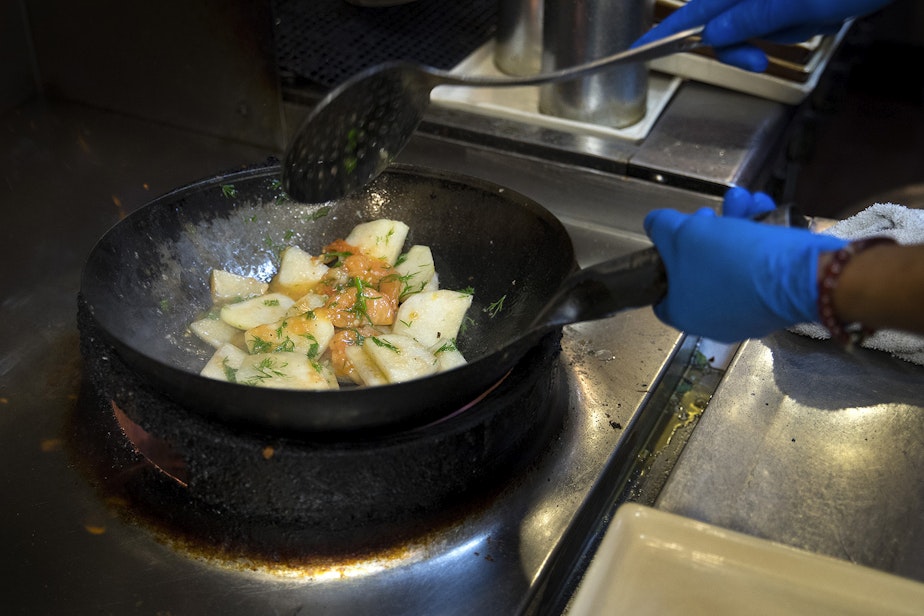Report shows racial divide in Seattle restaurants

Seattle might think of itself as a progressive city, but there’s racial segregation in the restaurant workforce. That’s one of the findings in a new report about equity in the industry.
Florentino Lopez has worked in the industry for nearly two decades. He remembers applying for a server position at an establishment. After three interviews, the manager offered him a job behind the scenes, as an expeditor, someone who makes sure food gets to the table on time.
“His reason was that I need to learn more about food,” said Lopez. “It was a hamburger and French fry restaurant, okay? It was a brewery.”
Lopez’s experience is common for workers of color according to a report by the Seattle Office for Civil Rights and the advocacy group Restaurant Opportunities Centers United.
People of color make up 46 percent of the workforce says Teo Reyes, ROC Director of Programs and Research. But they’re concentrated in behind the scenes positions or in lower wage jobs.
“They’re disproportionately in restaurants overall, but they’re almost entirely absent from the high-end fine dining positions where they’re really able to thrive.”
Sponsored
Reyes says these positions matter because they determine their wages and their potential for promotion.
The study relied on Census data and information gathered from four focus groups. It also conducted matched pair tests where two people applied for the same job in 100 upscale restaurants. Both applicants had the same experience, same skills. The only difference was their race. The result: in nearly half of the cases, white candidates were favored.
“There’s certainly overt discrimination that occurs, but we think the vast majority is due to implicit bias," said Reyes.
As a result, many workers of color says they feel discouraged from seeking higher positions. The report also notes that overall, the median wage for restaurant workers of color is about $2 dollars an hour less than their white counterparts.




